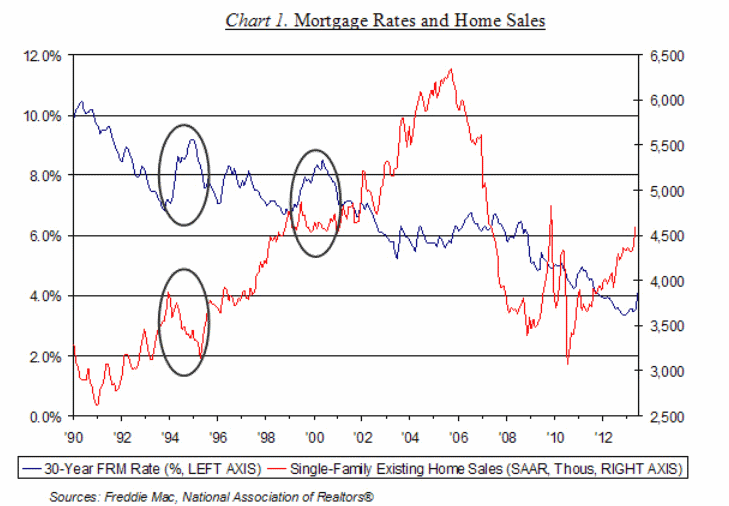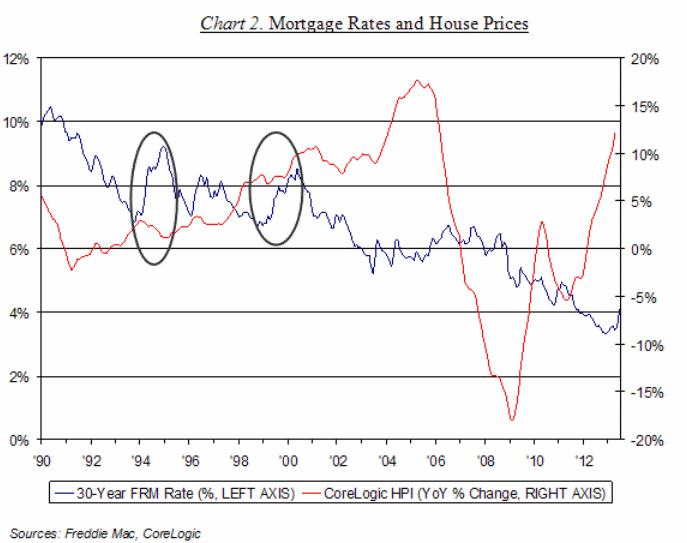Is the 116 basis points (bps) rise in rates from 3.35 percent to 4.51 percent within the May 3 to July 12th enough to stall the housing recovery? Fannie Mae's Mark Palim says there is no historical precedent for knowing the impact on the housing market of an interest rate change, either up or down, because of a Federal Reserve policy of quantitative easing. Such large movements themselves do have a history however and it suggests that while there is little correlation of rate changes with home prices, rapid rate increases do contribute to a decrease in home purchase volume and an increase in the use of adjustable rate mortgages (ARMs).

Palim references two periods when rates increased meaningfully in a sufficiently short period of time to have an impact on the housing market, October 1993 to December 1994, when mortgage rates increased to 9.20 percent from 6.83 percent, a 237 bps change and October 1998 to May 2000, when there was an 180 bps increase from 6.71 percent to 8.51 percent.

During the first period the rising trend in existing home sales was reversed. (See Chart 1.) However, the impact on home prices was muted. The rate of appreciation slowed, but year-over-year price changes remained positive. (Chart 2.) The second period lasted 19 months, a smaller and more gradual change than in the first instance which appears to have led to a more muted housing market response. The pace of home sales and rate of increase in house prices moved sideways rather than changing course entirely.

In both periods there was a noticeable increase in the market share of ARMs, but one that reversed itself once the decline in fixed-rates resumed. Palim says the limitations on ARMs under the new Qualified Mortgage rule and the still historically low fixed rates may cause a more muted increase in the ARM share of the market this time than in prior periods of rising rates.
He concludes that the increase in mortgage rates to date (116 bps in nine weeks) is not expected to be sufficient to choke off the housing and economic recovery. The prior periods may provide some guidance on the magnitude, speed, and duration of an increase in mortgage rates that would be of greater concern for the recovery.







